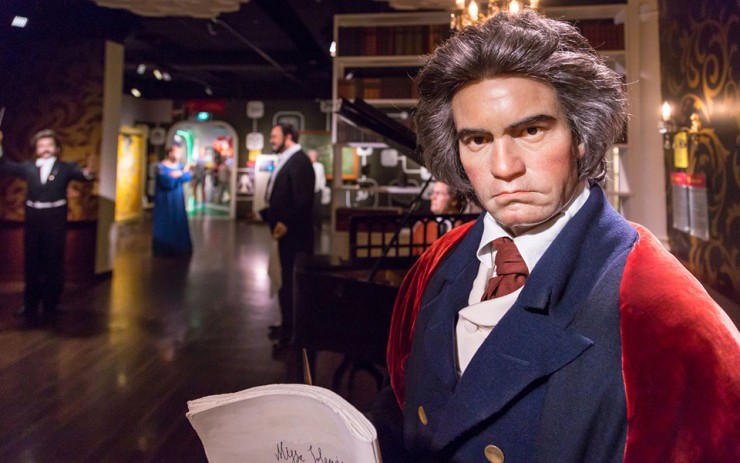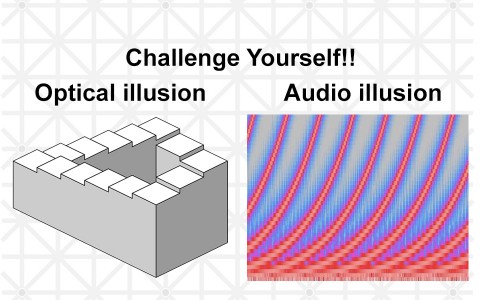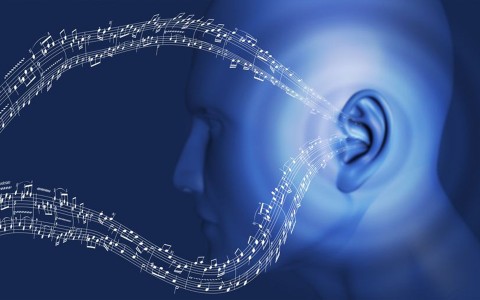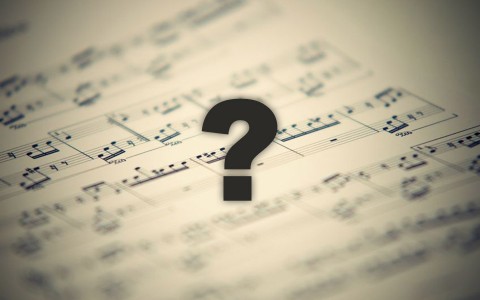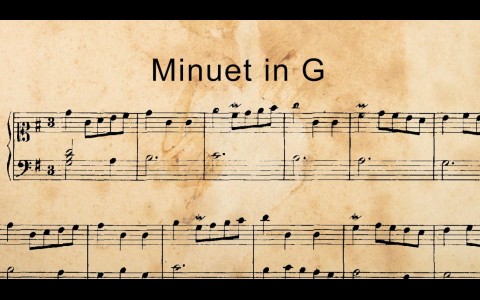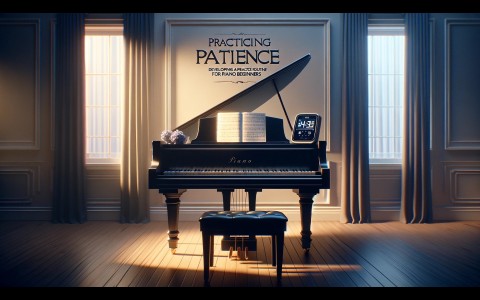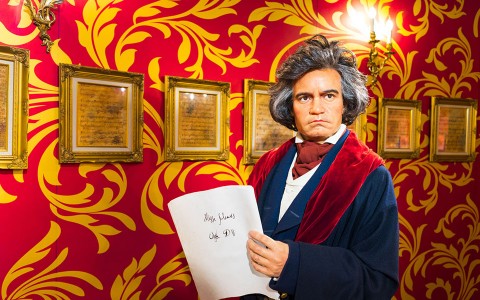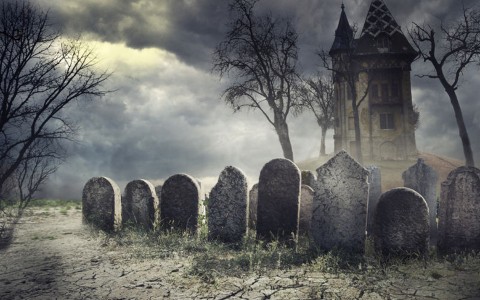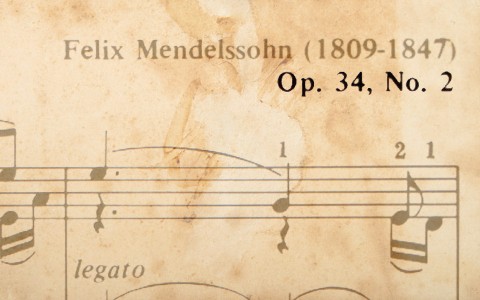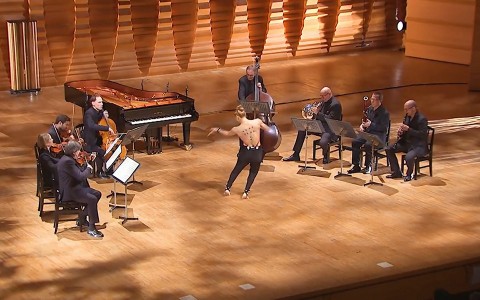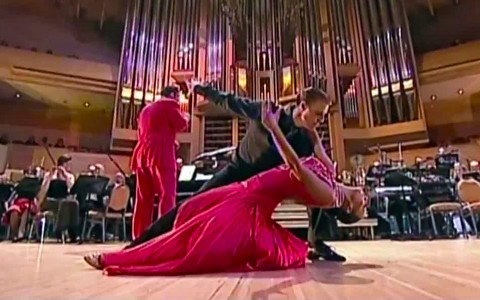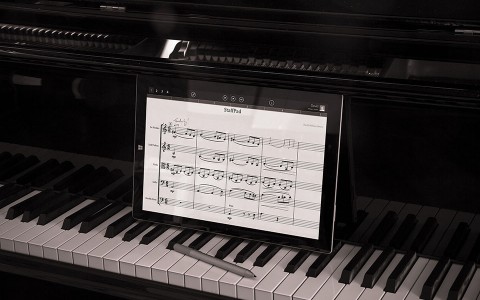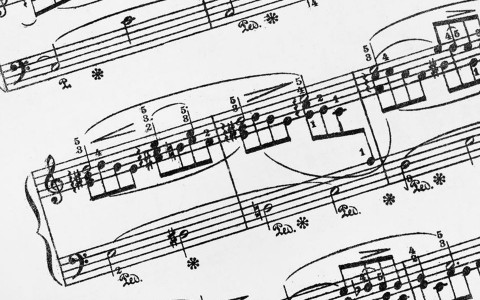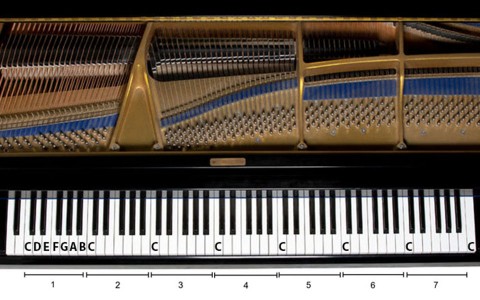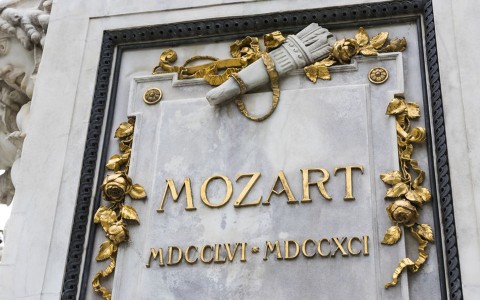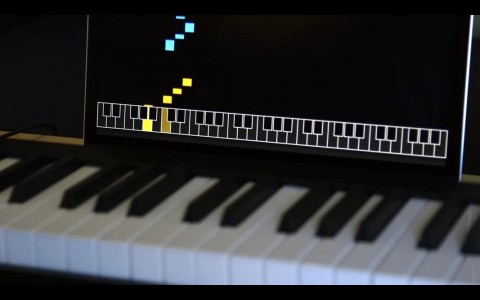5. On the Middle-Period Sonatas
As aforementioned in Part 1, the middle-period would see various forms of experimentation by Beethoven: changes in forms of the structure, exploring keys rarely used by Haydn and Mozart, an increase in the emotional capacity (and hence expressiveness) and creating new textures.
One excellent example would be the Sonata in D major Opus 28 also known as the “Pastorale” Sonata. The 1st movement presents a beautiful singing theme accompanied by a Basso Ostinato (repetition of the bass note). The 2nd theme of the 1st movement is presented with the same accompaniment as the 2nd movement of the “Pathetique” Sonata (Addition of an inner voicing) - Again, signs of a transition to a new style of music.
5.1 Opus 26 Sonata in A flat major
One of my personal favorite sonatas. The main theme of the 1st movement is simply so alluring. This sonata is one of the strongest “evidences” for Beethoven’s musical invention and experimentation. Also known as the “Funeral March” Sonata this piece is known for 3 peculiarities. Firstly, this is the only time Beethoven chose to begin his Sonata with a Theme and Variations, instead of the conventional Sonata-form. Curiously, there has only been one other sonata (at that point in time) which opens with a Theme and Variations, and that would be Mozart’s A major Sonata K.331 (which is the sonata containing the well-known “Rondo Alla Turka” or the Turkish March).
And that brings me to the 2nd point that none of the movements in this particular sonata are in sonata-form. However, digging a little deeper, one would realize that none of the movements in the same Mozart sonata mentioned above are in sonata-form as well. Could Beethoven have gained inspiration from Mozart’s sonata for this work?
The 3rd peculiarity would be the fact that this sonata has a Funeral March as one of the movements. I would believe that was the first time a funeral march was incorporated into a sonata and the only other “successful” sonata with such an incorporation would be Chopin’s 2nd Sonata in B flat minor.
5.2 Opus 27 No. 2 Sonata Quasi Una Fantasia in C sharp minor “Moonlight”
Arguably one of the most well-loved piano pieces in piano literature, known for the air of mystery and tragedy of the 1st movement and the virtuosity of the 3rd movement. As is similar to the Funeral March sonata, we see a deviation from the traditional form of the sonata. This is evident from the title given by Beethoven, ‘sonata in the manner of a fantasy’ which is more applicable to the famous opening movement Adagio Sostenuto.
And it is the same movement which the poet Ludwig Rellstab likened it to moonlight shining down upon Lake Lucrene, and hence the name “Moonlight” sonata. Here, we see elements of a fantasy: the music sounds almost improvised especially the series of modulations before the repeat of the main theme. The 3rd movement shows yet again, the familiar fiery spirit of Beethoven (through the use of broken chords) previously seen in the 1st movement of the Pathetique.
It is theorized that Chopin’s Fantasie-Impromptu was inspired by this movement, with both pieces sharing the same key (C sharp minor) and even quotations from the music.
5.3 Opus 53 Sonata in C major “Waldstein”
One key difference Beethoven’s sonatas and sonatas by Haydn and Mozart’s is that Beethoven’s use of the sonata form is much longer in terms of length. Compared to Mozart and Haydn, Beethoven sonatas are saturated with developments of the main theme (perhaps an instinct as a prominent improviser). And it is the 1st movement of this sonata we evidently see this technique implemented through the use of sequences and hence a series of brief and unconventional modulations.
Dedicated to Count Waldstein, this sonata displays new technical demands for the piano to elevate the piece to a new stage of grandeur and to achieve some form of balance between the contrasting themes in the 1st movement (the rapid, exciting 1st theme in C major as opposed to the relatively slower, chordal 2nd theme in E major). One of the key sections of this sonata would be the coda of the 3rd movement (which is a rondo). The coda here comprises of the main theme of the 3rd movement but played extremely quickly (prestissimo as opposed to the allegretto moderato, the tempo marking of the 3rd movement). This pattern of the coda could be seen in his other works; prominently the finale of the 4th movement of his 5th Symphony and it is precisely this coda that raises the grandeur of this piece.
5.4 Opus 57 Sonata in F minor “Appasionata”
Personally, this is my favorite sonata out of the entire cycle and its 3rd movement is especially dear to me. Most would agree that this sonata is the 2nd most difficult sonata Beethoven ever wrote (the most challenging being the Hammerklavier) due to its high technical demands: awkward hand positions and fingering (the 3rd movement being infamous amongst pianists). On top of that, the nuances of the shape of the main motifs, coupled with the large capacity of expression; only the best can manage such a work.
It is here again where one hears the ferocity present in the Pathetique and Moonlight. There is a story told by Beethoven’s secretary Ferdinand Ries which describes the composition of the finale of the sonata: While taking a walk with Beethoven, he hummed the entire way, or sometimes even howled to himself- up and down, up and down, without singing any definitive notes. When Ries asked him what this was, he replied: “A theme for the last Allegro of the sonata has just occurred to me”. When they got back, Beethoven rushed to the piano without taking off his hat and stormed for at least an hour with the new finale.
If there is one word to describe the point of the whole sonata, it would be tension- which erupts in short episodes. The sonata begins with the soft pianissimo, in a low register and coupled with the rhythm of the main theme, the music begs for a volcanic eruption. Indeed, the pianissimo motif is interrupted by forceful chords in the tonic key (F minor).
Then, the 2nd theme gradually enters in its relative major of A flat major, with this air of victory before falling back down in anguish through the use of moto perpetuo (perpetual motion). After many climaxes, the 1st movement ends in exhaustion with the use of a coda similar to the 3rd movement of the Waldstein Sonata (a rapid version of the main theme).
Ending the storm of the 1st movement, the sonata proceeds to with a simple theme and variations in the gentle key of D flat. With the illusion of the loosening of tension, the tranquility is brushed aside and returns to the original mood of fury, signifying the start of the next movement. It opens with a barrage of chords that resemble an outcry. The use of moto perpetuo is evident in this movement to build tension before releasing the rage at the finale (that Beethoven was humming in his walks), ending the movement with desperation and outrage.
6. On the Late Sonatas
Here, the sonatas display great diversity in expression. Virtuosity is still enforced (and heavily) in his last sonatas, breaking the tradition both Mozart and Haydn upheld. One curious characteristic of the late sonatas is Beethoven’s attempt to infuse fugal or polyphonic texture into his works- a move that was last observed in one of his early sonatas (Opus 10 No.2 Sonata in F major, its 3rd movement). This is evidently seen in his Sonata in A flat major Opus 110 where the last movement (Titled Fuga) has a polyphonic texture, a trait non-existent to conventional sonatas by Haydn and Mozart.
6.1 Opus 106 Sonata in B flat major “Hammerklavier”
A monumental work that speaks of one word- power. This is infamous amongst pianists as not only the most challenging sonata, but also Beethoven’s most challenging piano work. When, it was first published, it was thought to be impossible perform until, Liszt (of course, of all people to do so) broke this myth and performed it one of his concerts, thus elevating his “already-high” status as a virtuoso pianist.
Power- true enough the sonata begins with forceful chords in B flat major that resemble the trumpet sounding. And throughout the whole movement, phrases constructed by chords, backed up by octaves as accompaniment, not only does this signify the high level of technical demand needed, but builds upon the air of victory of the movement.
The 3rd movement contrasts with the 2 movements in terms of speed and emotion. While the first two expresses joy, victory, pride (hence, also suggesting the speed is rather rapid), the 3rd movement, is sorrowful and to directly quote the tempo marking, Adagio Sostenuto. This movement is the longest, with most pianists spending about 16-25 minutes on this movement. But, such a speed is necessary, for it emphasizes the mood of sorrow. Many pianists and critics hold this movement dear to them. Pianist Wilhelm Kempff, known for his interpretations of Beethoven exclaimed that this movement was ‘the most magnificent monologue Beethoven ever wrote’.
The last movement consists of an introduction, followed by a fugue (more evidences of polyphonic incorporation). This movement is the testament of a pianist’s technical skill, for it is far more difficult than that on the fugues of Bach’s Well-Tempered Klavier (but I would say on par with his Art of Fugue).
6.2 Opus 109 Sonata in E major
Another one of my personal favorite sonatas, with special affection towards the sublime 3rd movement. Here, evidences of a bridge to the Romantic period are present. The opening theme, which makes use of the finger-pedal, when performed to the prescribed tempo marking of vivace, ma non troppo, would resemble to that of a harp, reminiscence of the 1st piece in Mendelssohn’s Lieder Ohne Worte (curiously also in E major).
The rapid speed is soon taken over by a completely contrasting speed of Adagio Expressivo; again, signs of deviation from the conventional sonatas. However, even with the sudden change of speed, the movement still consists of fluttering arpeggios. Could Beethoven be thinking of a harp when composing this work?
The 3rd movement presents a theme that expresses divine beauty and a set of variations, each variation showing signs of musical innovation. Surprisingly, the 1st variation has almost nothing in common with the theme (with the exception of the key), but still presents a lovely melody atop of simple accompaniment. The 2nd variation revisits the harp-like quality Beethoven could have been emulating in the 1st movement. Polyphonic textures could also be observed in the proceeding variations.
6.3 Opus 111 Sonata in C minor
The last sonata he wrote, yet its importance in the cycle is as high as those mentioned above. Beethoven has always associated the key of C minor with that of anguish, rage and tragedy (and thus the stormy qualities of the Pathetique and the 5th Symphony; both of which are in C minor). This sonata is no different in this aspect.
In addition, similar to the Pathetique, it has an introduction before proceeding with the regular sonata-form. But, the focus of this sonata would be the 2nd movement. The 2nd movement consists of a simple theme and variations in the key of C major. Pay particular attention to the 3rd variation (15:56 of the video). Does it resemble any other music genre? Yes, renowned pianist Dame Mitsuko Uchida reckons that it resembles to that of the boogie-woo and hence, proto-jazz or a ragtime. Could it have been possible that Beethoven had introduced the fundamental rhythmic notation (or “swing”) for what is to be the future of music?
7. Beethoven’s legacy/ Conclusion
Since Beethoven’s time, the face of music changed forever. Beethoven made it possible for one to break the traditions of music. And by casting away the dogmatic conventional approaches of music from the past, great composers after Beethoven (many of whom modeled their own compositions after Beethoven) carried on his legacy of musical innovation.
These composers: Chopin, Liszt, Schumann, Mendelssohn, Brahms, Wagner, and Berlioz too inspired others to push the boundaries of music and the cycle of inspiration goes on and on till present times. And true enough, the cycle will still continue; the music of today: Pop, Rap etc. will irrevocably inspire a new music movement.
So, is Beethoven a great composer? Yes. But is he the greatest composer who ever lived?
You decide.
